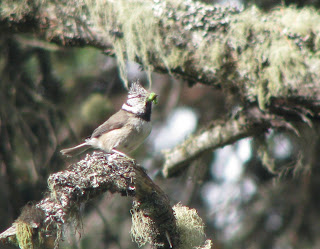
Merry Christmas & a happy & wildlife-filled new year to you all. December 2010 was cold & snowy throughout, with a slight thaw at the end of the month at last allowing access to some of the more remote wildlife-watching areas. Bird day-lists remained in the 40's, with mammal day-lists ranging between 5 & 9 depending on our luck.
Wildlife highlights included:
Most of our 'local specialities' - Dipper, Red Grouse, Black Grouse, Crested Tit, Crossbill, Golden Eagle, Red Squirrel, Red Deer, Mountain Hare, Mountain Goat etc, continued to show well, when the weather permitted.
The very cold weather tempted many 'garden rarities' such as Brambling, Yellowhammer & Bullfinch, as well as huge numbers of more common birds, into 'bird-lovers' well-stocked gardens - & accordingly, Sparrowhawks too, were seen much more frequently!
Crested Tits were seen regularly coming to feeders in areas near forests.
Snow Buntings were seen on a few occasions in & around the Cairngorms Ski Area car park.
Wildfowl & seaduck numbers continued to increase round our coastline.
Inland, rarities in our area included a Great Grey Shrike & a Bittern, both around Insh Marshes & both good 'ticks' for this area.
Coastally, rarities in our area included a King Eider & Glaucous & Iceland Gulls, all seen in the Moray area.
A trip down to the South coast of England gave me sightings of bird species never, or rarely seen this far North, such as Green Woodpecker, Nuthatch, Jay, Magpie & Ring-Necked Parakeet!


















